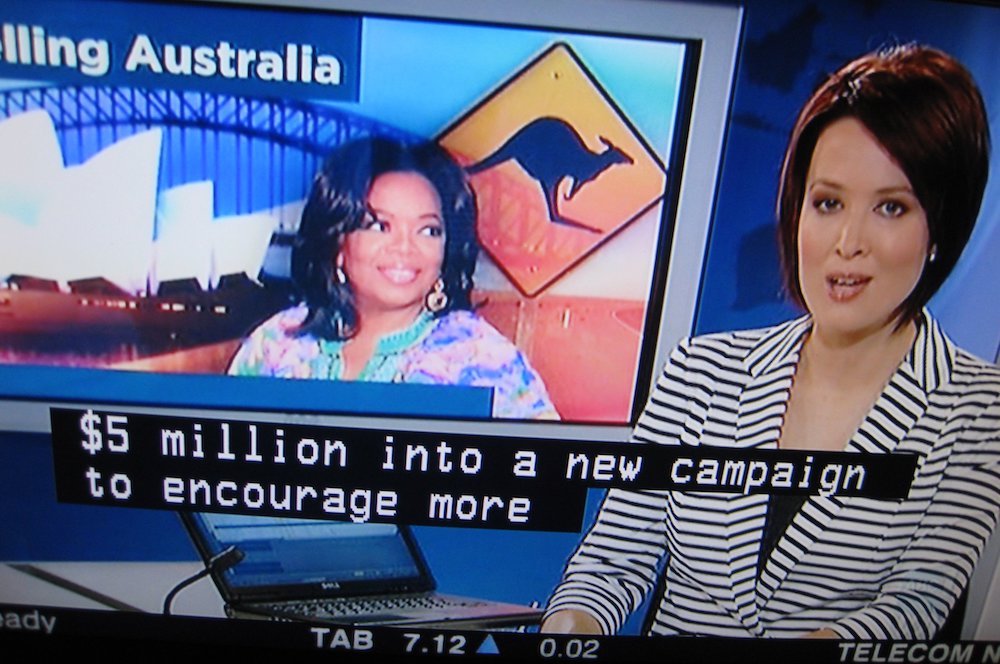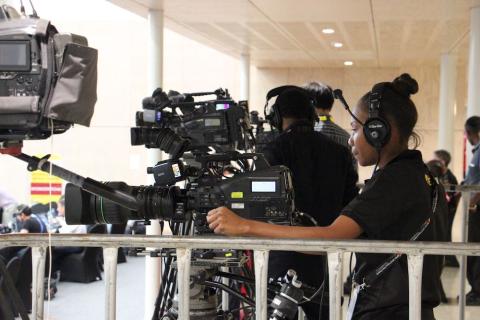Scott Morrison’s recent response to Australia’s receding “voice” in the Pacific appears to be a Home and Away solution – namely, according to the Prime Minister, the provision to “our Pacific family” of more stories, news, drama, and sports from Australia’s commercial television networks.
Which dramas, which stories from Australian commercial television might pique the interest of Pacific Islanders in far-flung Kiribati, Tonga, or Tuvalu? And, given the increasingly local focus of commercial television news programs, we can but wonder how a live cross from a car crash in Western Sydney might be of any relevance to viewers in Port Vila, Apia, or Nuku’alofa.
Still, as Morrison stated:
What better way to stay in connection than through the lifestyle and everyday experiences we are all lucky enough to enjoy … [and] the government will be talking with our commercial TV operators to make sure our friends in the Pacific have access to more quality Australian content on television and other platforms.
Perhaps before an Australian government once again takes the paternalistic approach of deciding what our Pacific neighbours want to watch, we might actually ask them what sort of programs would serve them best. And why is the government talking only to the commercial television operators “about quality Australian content” when the backbone of every one of their programming schedules is reality TV – programming by its very nature made almost exclusively for Australian, not Pacific, audiences.
We are not arguing that Australia’s public broadcasters should be the sole carriers of the nation’s voice to the outside world. But nor, given their extensive experience in international broadcasting, should they be excluded – as the PM’s announcement implied.
Admittedly, the long-running Home and Away soap was so popular on the since closed Australia Network satellite channel that some Pacific nations – the Cook Island government, for one – would interrupt cabinet sessions so everyone could watch the latest episode.
But this latest Home and Away solution from Canberra appears ill-conceived and short-sighted on a number of counts.

For starters, why make a public commitment before two current government inquiries, into Australia’s international broadcasting services and “soft power” diplomacy, have yet to complete their reviews and offer recommendations?
Why hold an inquiry if you have no intention of heeding its recommendations, let alone allowing the experts to conclude their deliberations? Why decide what our “Pacific family” might want to view/listen/interact with before asking them what programs would serve them best?
To pre-empt these inquiries smacks of policy-on-the-run by a government struggling to address China’s growing influence in our Pacific neighbourhood, even though the People’s Republic was not mentioned by name in the Morrison statement.
Sceptics might also portray it as an attempt by Canberra to assuage commercial televisions’ interests with taxpayer-funded largesse ahead of next year’s federal election, and at the expense of an out-of-favour ABC and its public broadcasting brethren.
The public broadcasters, and particularly the ABC, with decades of broadcasting exposure and expertise in the region, have consistently displayed a commitment to and understanding of Pacific affairs unmatched by their commercial counterparts.
The commercial operators, canny and market-wise, know well that there are few, if any, profits to be made broadcasting to an audience of barely 11 million people spread across 17 small, developing nations. To make Morrison’s commitment a reality will presumably involve subsidising those networks from the public purse.
Radio, still an influential, widely-followed, and affordable medium in Pacific communities, does not appear to have warranted any consideration in the PM’s overtures to the commercial television bosses.
Despite disinterest from the government, regional strategic developments in recent years have shown up the folly of reducing Australia’s voice to Pacific audiences.
For two decades, Australia’s broadcast footprint and impact across Asia and the Pacific have suffered from acute government policy reversals, resulting in a succession of budget cuts and “efficiencies” that Canberra has forced upon the ABC, the only Australian media organisation legally entitled to use government funding for international broadcasting services such as Radio Australia and the former Australia Network.
Despite little interest from the government, and, at times, its hostility to those services, regional strategic developments in recent years have shown up the folly of reducing Australia’s voice to Pacific audiences.
Submissions from the Pacific to Canberra’s international broadcasting review, including from national leaders, have further bemoaned Australia’s retreat from serving those communities.
But there is a better option, one that would meet both Australia’s national interests in the Pacific and quench their thirst for increased and more relevant Australian content on all media platforms. Content that –long and expensive experience has taught international broadcasters – must be understood by, and is compelling for, the target local audience.
Rebroadcasting popular Australian TV programs in the region, whether sourced from public or commercial broadcasters, without first being re-versioned or re-purposed for audience relevance and context is to risk failure.

Our solution, contained in a submission to the Review of Australian Broadcasting Services in the Asia Pacific and outlined recently in The Interpreter (International broadcasting: Not so simple as ABC), is the creation of an independent statutory corporation or foundation to purchase, produce, and broadcast “high-quality, independent, contextualised, and trustworthy news, information, and entertainment programs for Asia Pacific audiences via multiple digital delivery platforms.”
This publicly-funded entity would distribute content to our region “that explains and reflects contemporary Australia and its people, their multicultural way of life, democratic values, and institutions, as well as everyday realities, including culture, education, and sport.”
Its charter would require the best of contemporary Australian content from all public and commercial broadcasters and independent production houses, assembling the finest programs Australian media has to offer, whilst taking partisan political expediency and annual funding squabbles – which have bedevilled international broadcasting from this country in recent times – out of the equation.
Australia’s long experience in international broadcasting must not be ignored or discarded.
We envisage that news and current affairs output would “be produced in close association with the ABC and SBS, given their acknowledged expertise in foreign reporting and languages, but also drawing on commercial news sources where appropriate, and all while adhering to the highest editorial principles, ethical standards, and practices of independence, balance, and accuracy.”
Finally, the international broadcasting corporation or foundation proposed would operate in close consultation and in partnership with Australia’s Pacific neighbours.
Such partnerships, including co-productions and training initiatives, would seek to build and strengthen ties between all involved rather than simply transmitting or, worse, dumping Australian content on unsuspecting regional audiences without thoughtful consideration of their particular needs and cultures.


